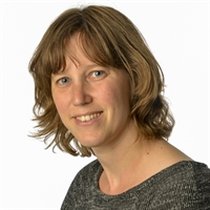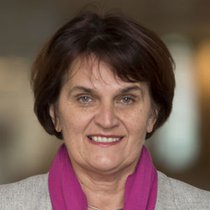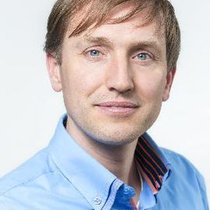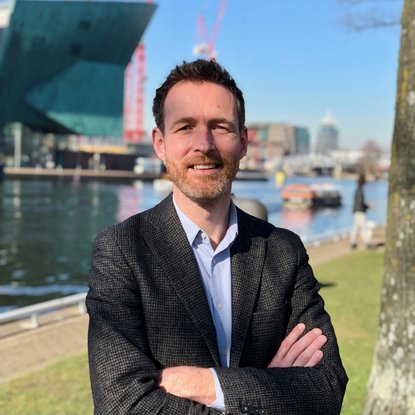Urban challenges and the transitions that arise from these - such as the energy transition - are complex challenges that are interdependent on many different variables. Solving them is not straightforward and requires multiple steps and successes that add up, to move forward and create impact.
Celebrating the 5-year anniversary of AMS Institute, we are launching a series of long-reads. In attempt to untangle the urban challenges, celebrate successes, collaborations, steps forward, solutions we worked on and the impact we've created over the past 5 years - together with our partners.
The Challenge with Urban Energy
Different factors will cause a massive impact on our energy supply. Although electricity use in Amsterdam is relatively stable today, this will change in the near future. Due to expected population growth, the increase use of electric vehicles and the shift from gas boilers to electric heat pumps, we will start consuming more and more electricity. This change has an impact on voltage quality on the grid, especially at peak moments: in the morning, when we wake up, or in the evening, when we come home. However, also when we want to charge our – growing number of - electric vehicles (EV's), there are large fluctuations in the supply of electricity. The current electricity grid was not built for these peak moments and will, therefore, become congested and thus less reliable at an increasing rate.
Complications of renewable energy
On the other hand, and at the same time, the supply of solar and wind energy is growing rapidly. This sustainable energy will replace non-renewable energy increasingly into the system. Unfortunately, this is not without complications. These new systems aren't centrally organised, whereas non-renewable energy is. The more centralised the system, the easier it is to organise: one supplier, one type of energy, one infrastructure, one 'production site'. When there are different types of energy, it is sometimes not possible to use the same infrastructure. A present-day example of this is electricity and gas. On the other hand: a more decentralised system with local input will be more stable.
Furthermore, non-renewable energy gives a constant supply, contrary to most of the new, more unpredictable systems. The surpluses or shortage on sunny/windy or cloudy/windless days can cause local problems, such as blackouts, due to too much demand for energy at the same time.
All these factors increase the need for flexibility in the energy system significantly. In the so-called 'energy transition', technological innovations are needed to develop an energy network that is ready for the changing demand and the sustainable ways of generating energy.
Affordable alternatives for reliable energy system
One way to improve the capacity of the network is to increase the weight of it: laying more and thicker cables to make the energy network more efficient. This is far from ideal: it's expensive to lay these thicker cables and extremely disruptive as roads will have to be broken open to do the job. Space in Amsterdam is scarce, just like in other densely populated cities.
However, there are good and more affordable alternatives to this. If the amount of sustainable energy is stored well when there is a surplus, so if we balance energy by making a backup, it could relieve the electricity grid during peak moments. This way, we can minimise the cost of energy generation and the energy import from external grids. Hence, we need alternative energy carriers besides electricity for the storage purpose to be able to have a reliable energy system.
URSES+
The program: Uncertainty Reduction in Smart Energy Systems (URSES+)
To contribute to the transition to a reliable, affordable and sustainable energy system, AMS Institute partnered up with NWO, Shell and TKI Urban Energy and set up the URSES+ program. It contains eight pilot projects that tested and developed smart energy solutions. The idea is to help the energy transition, while also dealing with increased variability in consumption, storage and production. Flexibility is the keyword, and it should have a prominent role in making our energy system future-proof. The resulting “Uncertainty Reduction in Smart Energy Systems“ (URSES+) program consists of 8 projects to reduce the inherent uncertainty for actors in the energy chain by developing the necessary knowledge and tools. We invite you to continue reading to learn more important findings and innovations created by the URSES+ research project.
Household batteries as virtual power plants
A way to store a surplus of self-generated solar energy is in a home battery, which is useful for storage up to a week maximum.The software connected to the battery determines what happens to the energy flows for an optimal load on the grid. This use of storage capacity in households, however, is still completely new in the Netherlands. Along with the lack of a real legal framework for it, one of the challenges is the social adjustment or change that citizens need to make. Firstly, it's not clear how consumers-turned-producers, the so-called 'prosumers', would adapt their (energy) consumption practices in interaction with the home battery. Secondly, it requires new forms of cooperation between existing and new players in the field of smart energy.
This more social and organizational aspect of local energy storage was the focus of the URSES+ research project StoRE. The objective was to understand how energy practices around storage, such as charging, energy management, monitoring and consuming were introduced or reconfigured. It did so by observing the EU City-zen Virtual Power Plant (VPP) project in which a group of citizens in Amsterdam Nieuw-West tested household batteries as virtual power plants. Participants with solar panels were interviewed and took part in workshops to facilitate discussion about the future of this technology.
An 'active' relationship with energy
The interviews showed that when people first get their solar panels, they're excited about finding out what the panels will 'do'. With the help of digital interfaces (tied to solar panels, household batteries, or energy platforms), people keep track of what happens. Through these close monitoring practices, people develop an 'active' relationship with energy. Many people who installed solar panels became more conscious of how they consumed energy and started paying closer attention to sustainable energy use in their household in general.
However, the research found that the household battery from the EU City-zen VPP project disrupted this active relationship to energy. Dr Sanneke Kloppenburg, one of the main researchers of the StoRe project, explains:
“People had less insight into what happened to the energy from their solar panels because energy would flow between the battery and the grid in ways that were unrelated to the household's energy consumption. This made the battery into something of a 'black box'.”
Sanneke Kloppenburg, Researcher StoRe project (WUR)

The social dimension of virtual power plants
The conclusion is that for people to participate in sustainable energy systems satisfyingly, it's essential for them to know how the energy between the solar panels, a home battery and the grid flows. Regular communication and appropriate interfaces are, therefore, crucial.
Kloppenburg: "If the City of Amsterdam will have more virtual power plants in the future, it is important to realise that they are not only technical infrastructures but also have social, economic and sustainability dimensions. To ensure that virtual power plants help the energy transition progress and are interesting for city residents to participate in, it is important to involve them in the design and decision-making process."
ArenA's solution for dealing with energy peaks
Local storage of energy in a battery can also be a solution for absorbing temporary blackouts or peaks in the power system. This so-called 'peak shaving' was tested in the Amsterdam ArenA in the URSES+ project DISPATCH2. The stadium has developed several ambitious targets to be the first arena to be net climate neutral and wants to position itself as an energy hub for the surrounding area; Amsterdam South-East.
The ArenA's electrical energy storage system combined with local solar panels is shown to be an excellent supplement to be a microgrid. For example, in the case of a blackout, or when dealing with peaks in power demand during multiple events in the ArenA. Energy peaks are costly because they place a heavy burden on the electricity grid. Therefore, from an economic perspective, a company such as the ArenA has an interest in peak shaving and energy storage provides a potential solution.
The use of electric vehicles for power generation
Hydrogen produced from (surplus) renewable energy is another valuable alternative for the storage purpose to be able to have a reliable energy system. Hydrogen can be used to power the electric motor of fuel cell electric vehicles, which makes these cars one of the decentralised energy buffers in the future electricity system. The coupling between mobility and energy sectors can play an essential role in the energy transition. As such, electric vehicles can be used for both driving and power generation.
In the URSES+ CaPP Lifeproject, the focus is on an integrated energy and transport system in a real-life environment: the office of the Shell Technology Centre Amsterdam in Noord. Dr Samira S. Farahani, the postdoc researching the project explains: "We use electric vehicles, both battery and hydrogen-based fuel cell, for balancing and backup power during the times that the vehicles are parked."
“It is important to stress that this project addresses the role of hydrogen in the energy transition as a whole. As a carrier of solar and wind energy, hydrogen can have a substantial contribution to this transition, but at the same time it can contribute to the decarbonization of the energy, mobility and transport sectors as well as of the process industry."”
Prof. Zofia Lukszo, main main researcher CaPP Life (TU Delft)

The project is still ongoing, but some conclusions can be drawn already. Farahani: "Our study shows that in the future energy system of buildings, using both hydrogen and electricity will result in the most economical design. Moreover, it is feasible to use electric vehicles in an energy system for balancing and backup power purposes since, as we have seen in our study, we only need few cars during peak hours or mismatch times".
Storing heat and cold underground
Besides the different ways of storing electricity described, it's also possible to develop an energy network that is ready for the changing demand by seasonally storing heat. As heating and cooling buildings cost a lot of energy, much of it can be saved by storing heat and cold underground in water carrying layers. In areas with 'aquifers' - suitable sandy layers -, such as Amsterdam, the subsurface can be used this way as part of the (thermal) energy system.
With so-called 'aquifer thermal energy systems' (ATES), groundwater can be stored in wells at a depth of 50-300 m and applied to provide sustainable heating and cooling to buildings. In summer, excess heat is used in buildings used to heat water, which is pumped underground. In winter, the stored heat is extracted from the ground again. At the same time, cold water is stored, so it can be pumped up to cool buildings in summer. As much less energy has to come from other fossil sources, using aquifer thermal energy saves quite some energy: in temperate climates up to half of the energy use of large buildings.
Smart systems for maximal use of space
The number of ATES systems is on the rise. The Netherlands currently has approximately 2,800 operational ATES systems, and this number is expected to increase to about 200,000 by 2050. However, subsurface space in Amsterdam is becoming scarce. Dr Martin Bloemendal, one of the main researchers of the URSES+ Aquifer Thermal Energy Storage(ATES) research project, explains: "ATES systems use space in aquifers. During summer, the zone of warm water around the wells grows, while the cold well shrinks, and vice versa in winter. In high-density built-up areas like Amsterdam, there is a trade-off between accommodating as much ATES systems as possible and maintaining high recovery efficiency of individual wells by preventing mutual interaction between them."
“ATES systems use space in aquifers. During summer, the zone of warm water around the wells grows, while the cold well shrinks, and vice versa in winter. In high-density built-up areas like Amsterdam, there is a trade-off between accommodating as much ATES systems as possible and maintaining high recovery efficiency of individual wells by preventing mutual interaction between them.”
Martin Bloemendal, Researcher ATES project (TU Delft)

If this mutual interaction between wells occurs, both storages will lose out. To prevent this, builders keep a too large safety margin, which doesn't help with the crowding problem, leaving many buildings without a sustainable ATES system. Smart and self-organising ATES systems that communicate between buildings to coordinate the amounts of water pumped, can increase the number of ATES systems in a given area by 40%. Bloemendal: "Our project showed proof of concept of self-organising ATES systems for maximal and sustainable utilisation of subsurface space with ATES. This enables more energy savings in densely built-up areas, such as Amsterdam. The existing ATES systems at the Museumplein serves as a pilot for further development of the tools required for operation, communication and control."
When banning all but electric cars from the city
A significant impact on our energy network is the increasing number of systems that use electricity as an alternative to more polluting energy solutions, such as electric vehicles. In April 2019, the Amsterdam city council even published plans to ban all but electric cars from the city by 2030. However, to make the project a success, the city will need 16,000 to 23,000 charging stations by 2025. The current infrastructure would not be able to cope with such a demand for capacity. It has been calculated that two electric cars charged simultaneously in each street places such a heavy burden on the grid, that some areas in Amsterdam could face frequent blackouts. To have an idea: one car charging requires as much energy as two to three days of energy consumption in the average household, even though car batteries have tremendously improved and can be sufficiently charged within a matter of a few hours.
So it seems crucial to apply a flexible approach for charging electric cars when wind and/or sun are abundant, and the cost of energy is low. However, is flexibility really a solution for dealing with limitations in the capacity of the power grid? If everybody starts to charge their electric vehicle at night because it's much cheaper (or because they get paid for it!), the opposite will happen, and the increase in flexible consumption will eventually lead to costly grid reinforcements.
The idea is to develop algorithms and mechanisms that allow scaling to many loads or generators while taking network congestion into account. It's a complex puzzle that must involve all parties in a given neighbourhood to be solved.
Smart use of the electricity grid
The goal of the URSES+ research project 'Future-Proof Flexible Charging' is to resolve this complex puzzle, by developing algorithms to use the capacity of the electricity grid as smartly as possible. These algorithms are based on methods from informatics and artificial intelligence.
“We are trying to adopt flexible electricity use to production, taking into account the capacity limits of the network and the uncertainty surrounding renewable energy sources.”
Mathijs de Weerdt, Research lead Future-Proof Flexible Charging

The project is very relevant to a city like Amsterdam. De Weerdt: "From our research, we can conclude that smart charging can be beneficial for the electricity system, but can be harmful to the city. If network constraints are not properly taken care of in smart charging algorithms and electricity markets, eventually the power grid within cities will need to be reinforced. This will lead to high costs, and annoying construction works throughout the city. With the right algorithms and rules for electricity markets and network use, we can reduce these negative effects significantly."
Owning an electric vehicle and sustainable behaviour
Besides applying a flexible approach for charging their electric vehicles, people need to adopt various smart and sustainable energy behaviours to keep the electricity grid affordable and reliable. Embracing these sustainable behaviours, however, is more likely if people bought an electric vehicle for environmental reasons rather than, for instance, financial reasons.
Through questionnaires to 8,000 consumers, the URSES+ project SMARTEST tried to find out what strategies can be used to strengthen environmentally-friendly behaviour when environmental reasons did not play a key role in the decision to buy an electric vehicle. The project resulted in evidence-based recommendations for further smart energy system development, which include an accurate model of consumer behaviour, taking into account preferences and behaviour.
Privately-owned energy systems
Another solution to relieve the local electricity grid is for people to (partly) provide their energy themselves. Especially in newer areas in Amsterdam, where new energy systems can still easily be developed, people are organizing themselves increasingly in collectives to generate or store sustainable energy jointly. However, this development has institutional barriers. As energy supply is historically done by primarily established parties like energy service providers and energy asset managers, these collectives don't fit in well with the current system.
The URSES+ project ‘ABC’ (Amsterdam Builds the Coalition) researched how to remove these institutional barriers and establish new forms of cooperation between residents, private parties, institutions and local government. The research location was Centrumeiland, a new sustainable residential area in Amsterdam, as part of IJburg. The around 1,200 houses have different specially designed technical concepts, like heating through a combination of heat and cold storage. Part of the concept is that the end users become owners and/or managers of their privately-owned energy system.
The relationship of residents to a heat transition
The questions that were central to this research were: what risks and opportunities do residents identify in the transition to a sustainable heat supply in cooperative ownership? What roles do residents see for themselves and other parties in this so-called heat transition? And: what is the willingness of residents to organise themselves for sustainable heat supply in cooperative ownership?
The research led to the conclusion that, under the right circumstances, residents will be sympathetic to the proposed heat transition. The municipality of Amsterdam can help by supporting the residents with the design of a technical plan and by approaching fellow residents. Furthermore, it's essential to create the possibility of experimenting with various heating alternatives and smart use of the business case and planned maintenance moments.
Charging electric vehicles in the most optimal way
The URSES+ project that researches how financial incentives help to drive energy demand is ENBARK+. The focus is on embedding electric vehicles and smart parking lots through various price mechanisms while taking future predicted demand and renewable energy generation into account. This calls for particular infrastructure related to large scale office buildings, such as in the Amsterdam area at Schiphol, and the Zuidas.
“The research is not tied to a specific location in the city, but done through simulation of a general setup of smart parking lots connected to an office building. The outcomes are useful methods (algorithms) to be implemented in such a way that electric vehicles will be charged or discharged automatically in the most optimal way.”
Prof. Jacquelien Scherpen, Research Lead ENBARK+
Working together towards a reliable energy transition
The energy transition will probably not be completed with one technique alone. It's also clear that it's not only a technical challenge, as it brings social and societal challenges too. Furthermore, the transition needs to be organized at an international, national, regional and local level. However, all of this requires a kind of control: the transition must not become a chaotic mosaic of measures that are not in line with each other.
With the eight URSES+ projects, AMS Institute and NWO, together with network operators and energy suppliers, among others, make an essential contribution to a reliable, affordable and sustainable energy transition for the city of Amsterdam.
